Hanqing Zeng
S'MoRE: Structural Mixture of Residual Experts for LLM Fine-tuning
Apr 08, 2025Abstract:Fine-tuning pre-trained large language models (LLMs) presents a dual challenge of balancing parameter efficiency and model capacity. Existing methods like low-rank adaptations (LoRA) are efficient but lack flexibility, while Mixture-of-Experts (MoE) architectures enhance model capacity at the cost of more & under-utilized parameters. To address these limitations, we propose Structural Mixture of Residual Experts (S'MoRE), a novel framework that seamlessly integrates the efficiency of LoRA with the flexibility of MoE. Specifically, S'MoRE employs hierarchical low-rank decomposition of expert weights, yielding residuals of varying orders interconnected in a multi-layer structure. By routing input tokens through sub-trees of residuals, S'MoRE emulates the capacity of many experts by instantiating and assembling just a few low-rank matrices. We craft the inter-layer propagation of S'MoRE's residuals as a special type of Graph Neural Network (GNN), and prove that under similar parameter budget, S'MoRE improves "structural flexibility" of traditional MoE (or Mixture-of-LoRA) by exponential order. Comprehensive theoretical analysis and empirical results demonstrate that S'MoRE achieves superior fine-tuning performance, offering a transformative approach for efficient LLM adaptation.
Language Models are Graph Learners
Oct 03, 2024



Abstract:Language Models (LMs) are increasingly challenging the dominance of domain-specific models, including Graph Neural Networks (GNNs) and Graph Transformers (GTs), in graph learning tasks. Following this trend, we propose a novel approach that empowers off-the-shelf LMs to achieve performance comparable to state-of-the-art GNNs on node classification tasks, without requiring any architectural modification. By preserving the LM's original architecture, our approach retains a key benefit of LM instruction tuning: the ability to jointly train on diverse datasets, fostering greater flexibility and efficiency. To achieve this, we introduce two key augmentation strategies: (1) Enriching LMs' input using topological and semantic retrieval methods, which provide richer contextual information, and (2) guiding the LMs' classification process through a lightweight GNN classifier that effectively prunes class candidates. Our experiments on real-world datasets show that backbone Flan-T5 models equipped with these augmentation strategies outperform state-of-the-art text-output node classifiers and are comparable to top-performing vector-output node classifiers. By bridging the gap between specialized task-specific node classifiers and general LMs, this work paves the way for more versatile and widely applicable graph learning models. We will open-source the code upon publication.
Retrieval Augmentation via User Interest Clustering
Aug 07, 2024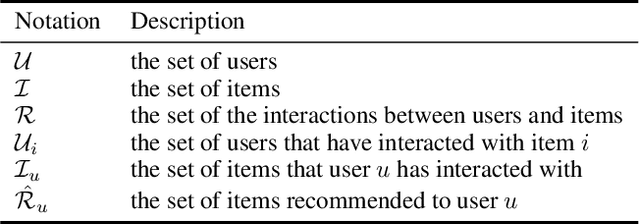
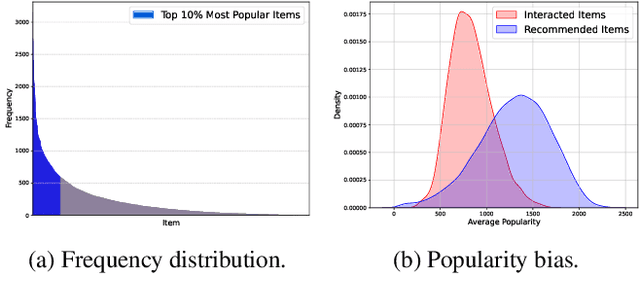
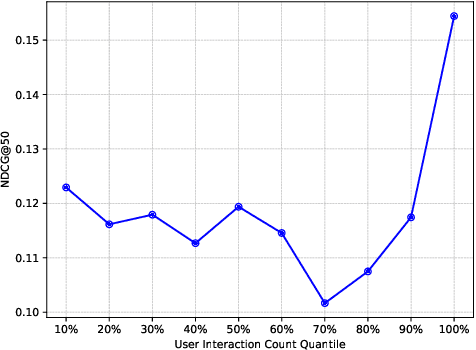

Abstract:Many existing industrial recommender systems are sensitive to the patterns of user-item engagement. Light users, who interact less frequently, correspond to a data sparsity problem, making it difficult for the system to accurately learn and represent their preferences. On the other hand, heavy users with rich interaction history often demonstrate a variety of niche interests that are hard to be precisely captured under the standard "user-item" similarity measurement. Moreover, implementing these systems in an industrial environment necessitates that they are resource-efficient and scalable to process web-scale data under strict latency constraints. In this paper, we address these challenges by introducing an intermediate "interest" layer between users and items. We propose a novel approach that efficiently constructs user interest and facilitates low computational cost inference by clustering engagement graphs and incorporating user-interest attention. This method enhances the understanding of light users' preferences by linking them with heavy users. By integrating user-interest attention, our approach allows a more personalized similarity metric, adept at capturing the complex dynamics of user-item interactions. The use of interest as an intermediary layer fosters a balance between scalability and expressiveness in the model. Evaluations on two public datasets reveal that our method not only achieves improved recommendation performance but also demonstrates enhanced computational efficiency compared to item-level attention models. Our approach has also been deployed in multiple products at Meta, facilitating short-form video related recommendation.
TASER: Temporal Adaptive Sampling for Fast and Accurate Dynamic Graph Representation Learning
Feb 18, 2024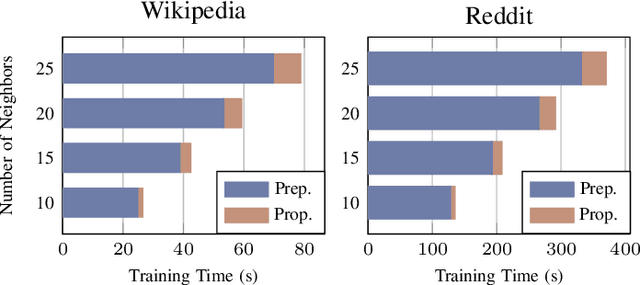
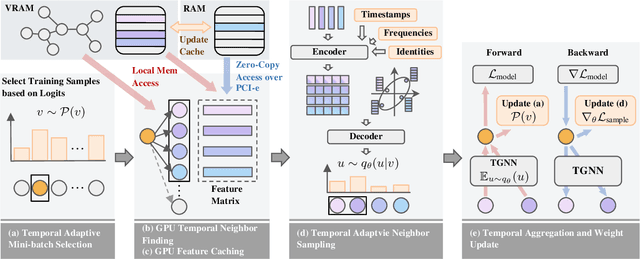
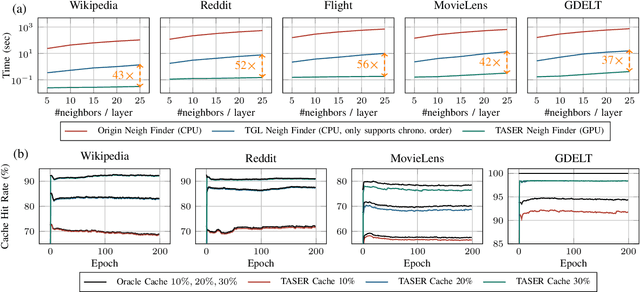
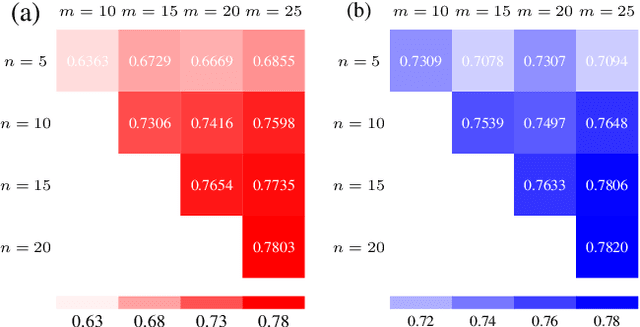
Abstract:Recently, Temporal Graph Neural Networks (TGNNs) have demonstrated state-of-the-art performance in various high-impact applications, including fraud detection and content recommendation. Despite the success of TGNNs, they are prone to the prevalent noise found in real-world dynamic graphs like time-deprecated links and skewed interaction distribution. The noise causes two critical issues that significantly compromise the accuracy of TGNNs: (1) models are supervised by inferior interactions, and (2) noisy input induces high variance in the aggregated messages. However, current TGNN denoising techniques do not consider the diverse and dynamic noise pattern of each node. In addition, they also suffer from the excessive mini-batch generation overheads caused by traversing more neighbors. We believe the remedy for fast and accurate TGNNs lies in temporal adaptive sampling. In this work, we propose TASER, the first adaptive sampling method for TGNNs optimized for accuracy, efficiency, and scalability. TASER adapts its mini-batch selection based on training dynamics and temporal neighbor selection based on the contextual, structural, and temporal properties of past interactions. To alleviate the bottleneck in mini-batch generation, TASER implements a pure GPU-based temporal neighbor finder and a dedicated GPU feature cache. We evaluate the performance of TASER using two state-of-the-art backbone TGNNs. On five popular datasets, TASER outperforms the corresponding baselines by an average of 2.3% in Mean Reciprocal Rank (MRR) while achieving an average of 5.1x speedup in training time.
Mixture of Weak & Strong Experts on Graphs
Nov 09, 2023Abstract:Realistic graphs contain both rich self-features of nodes and informative structures of neighborhoods, jointly handled by a GNN in the typical setup. We propose to decouple the two modalities by mixture of weak and strong experts (Mowst), where the weak expert is a light-weight Multi-layer Perceptron (MLP), and the strong expert is an off-the-shelf Graph Neural Network (GNN). To adapt the experts' collaboration to different target nodes, we propose a "confidence" mechanism based on the dispersion of the weak expert's prediction logits. The strong expert is conditionally activated when either the node's classification relies on neighborhood information, or the weak expert has low model quality. We reveal interesting training dynamics by analyzing the influence of the confidence function on loss: our training algorithm encourages the specialization of each expert by effectively generating soft splitting of the graph. In addition, our "confidence" design imposes a desirable bias toward the strong expert to benefit from GNN's better generalization capability. Mowst is easy to optimize and achieves strong expressive power, with a computation cost comparable to a single GNN. Empirically, Mowst shows significant accuracy improvement on 6 standard node classification benchmarks (including both homophilous and heterophilous graphs).
On the Equivalence of Graph Convolution and Mixup
Sep 29, 2023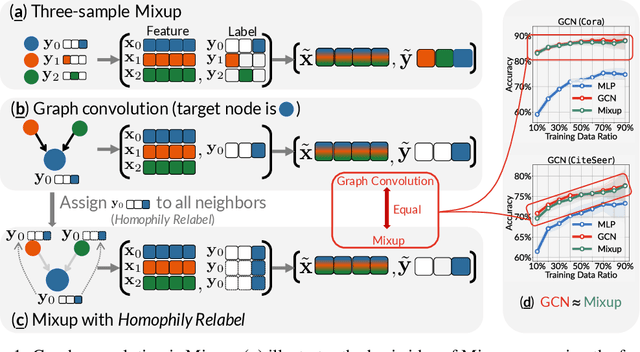
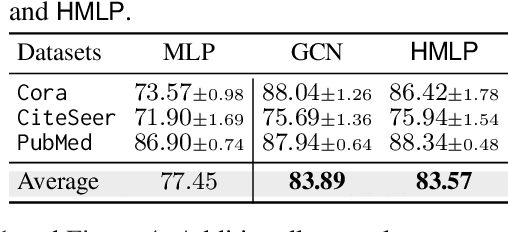

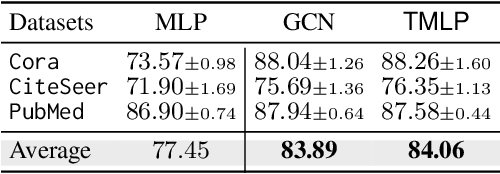
Abstract:This paper investigates the relationship between graph convolution and Mixup techniques. Graph convolution in a graph neural network involves aggregating features from neighboring samples to learn representative features for a specific node or sample. On the other hand, Mixup is a data augmentation technique that generates new examples by averaging features and one-hot labels from multiple samples. One commonality between these techniques is their utilization of information from multiple samples to derive feature representation. This study aims to explore whether a connection exists between these two approaches. Our investigation reveals that, under two mild conditions, graph convolution can be viewed as a specialized form of Mixup that is applied during both the training and testing phases. The two conditions are: 1) \textit{Homophily Relabel} - assigning the target node's label to all its neighbors, and 2) \textit{Test-Time Mixup} - Mixup the feature during the test time. We establish this equivalence mathematically by demonstrating that graph convolution networks (GCN) and simplified graph convolution (SGC) can be expressed as a form of Mixup. We also empirically verify the equivalence by training an MLP using the two conditions to achieve comparable performance.
LLM-Rec: Personalized Recommendation via Prompting Large Language Models
Aug 16, 2023



Abstract:We investigate various prompting strategies for enhancing personalized recommendation performance with large language models (LLMs) through input augmentation. Our proposed approach, termed LLM-Rec, encompasses four distinct prompting strategies: (1) basic prompting, (2) recommendation-driven prompting, (3) engagement-guided prompting, and (4) recommendation-driven + engagement-guided prompting. Our empirical experiments show that incorporating the augmented input text generated by LLM leads to improved recommendation performance. Recommendation-driven and engagement-guided prompting strategies are found to elicit LLM's understanding of global and local item characteristics. This finding highlights the importance of leveraging diverse prompts and input augmentation techniques to enhance the recommendation capabilities with LLMs.
Decoupling the Depth and Scope of Graph Neural Networks
Jan 19, 2022


Abstract:State-of-the-art Graph Neural Networks (GNNs) have limited scalability with respect to the graph and model sizes. On large graphs, increasing the model depth often means exponential expansion of the scope (i.e., receptive field). Beyond just a few layers, two fundamental challenges emerge: 1. degraded expressivity due to oversmoothing, and 2. expensive computation due to neighborhood explosion. We propose a design principle to decouple the depth and scope of GNNs -- to generate representation of a target entity (i.e., a node or an edge), we first extract a localized subgraph as the bounded-size scope, and then apply a GNN of arbitrary depth on top of the subgraph. A properly extracted subgraph consists of a small number of critical neighbors, while excluding irrelevant ones. The GNN, no matter how deep it is, smooths the local neighborhood into informative representation rather than oversmoothing the global graph into "white noise". Theoretically, decoupling improves the GNN expressive power from the perspectives of graph signal processing (GCN), function approximation (GraphSAGE) and topological learning (GIN). Empirically, on seven graphs (with up to 110M nodes) and six backbone GNN architectures, our design achieves significant accuracy improvement with orders of magnitude reduction in computation and hardware cost.
* Accepted to NeurIPS 2021
Accelerating Large Scale Real-Time GNN Inference using Channel Pruning
May 10, 2021



Abstract:Graph Neural Networks (GNNs) are proven to be powerful models to generate node embedding for downstream applications. However, due to the high computation complexity of GNN inference, it is hard to deploy GNNs for large-scale or real-time applications. In this paper, we propose to accelerate GNN inference by pruning the dimensions in each layer with negligible accuracy loss. Our pruning framework uses a novel LASSO regression formulation for GNNs to identify feature dimensions (channels) that have high influence on the output activation. We identify two inference scenarios and design pruning schemes based on their computation and memory usage for each. To further reduce the inference complexity, we effectively store and reuse hidden features of visited nodes, which significantly reduces the number of supporting nodes needed to compute the target embedding. We evaluate the proposed method with the node classification problem on five popular datasets and a real-time spam detection application. We demonstrate that the pruned GNN models greatly reduce computation and memory usage with little accuracy loss. For full inference, the proposed method achieves an average of 3.27x speedup with only 0.002 drop in F1-Micro on GPU. For batched inference, the proposed method achieves an average of 6.67x speedup with only 0.003 drop in F1-Micro on CPU. To the best of our knowledge, we are the first to accelerate large scale real-time GNN inference through channel pruning.
Deep Graph Neural Networks with Shallow Subgraph Samplers
Dec 02, 2020



Abstract:While Graph Neural Networks (GNNs) are powerful models for learning representations on graphs, most state-of-the-art models do not have significant accuracy gain beyond two to three layers. Deep GNNs fundamentally need to address: 1). expressivity challenge due to oversmoothing, and 2). computation challenge due to neighborhood explosion. We propose a simple "deep GNN, shallow sampler" design principle to improve both the GNN accuracy and efficiency -- to generate representation of a target node, we use a deep GNN to pass messages only within a shallow, localized subgraph. A properly sampled subgraph may exclude irrelevant or even noisy nodes, and still preserve the critical neighbor features and graph structures. The deep GNN then smooths the informative local signals to enhance feature learning, rather than oversmoothing the global graph signals into just "white noise". We theoretically justify why the combination of deep GNNs with shallow samplers yields the best learning performance. We then propose various sampling algorithms and neural architecture extensions to achieve good empirical results. Experiments on five large graphs show that our models achieve significantly higher accuracy and efficiency, compared with state-of-the-art.
 Add to Chrome
Add to Chrome Add to Firefox
Add to Firefox Add to Edge
Add to Edge